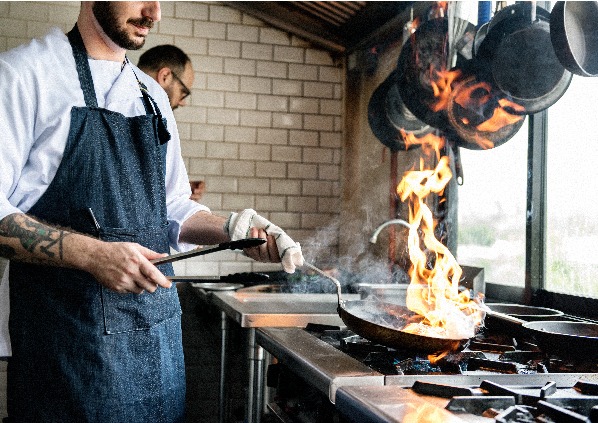Some would argue that cloud kitchen is a newly disrupted concept, since the traditional way of ordering food pretty much called for “walking into” a restaurant – or an eatery for that matter. However, several years ago – and that too, before COVID-19 happened, the concept of cloud kitchens somehow sneaked in through the restaurants’ kitchen backdoor.
It’s an interesting ‘anecdote’ if seen from a grander perspective.
The way the industry was introduced to the concept of a small food outlet hitting it hard through multiple mobile apps that are accessed by “foodies” 24/7. The ‘dine in’ experience is replaced by a ‘dine out’ experience where people get their food, delivered to them at their own homes.
By the year 2027, the concept of cloud kitchen will have advanced so much that it is expected to hold at least 12 percent of the market share. That’s approx. USD 71.4 Billion according to rough estimates.
However, these cloud kitchens weren’t always like this.
This post highlights the significance of a typical cloud kitchen and how it is expected to take over the industry, one virtual branch at a time.
Furthermore, Blink Co. experts delve deeper into the whys and hows of cloud kitchens to demonstrate them as a business opportunity for people who are looking to get a food business plan up and running in no time.
What is a Cloud Kitchen?
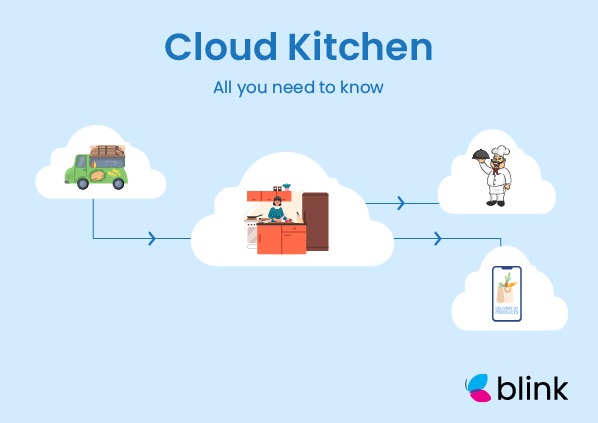
A cloud kitchen is a simple idea that cycles around having a shared space where more than one restaurant can prepare food, handle incoming customer orders and do a lot more without worrying about overhead expenses.
Simply put – It’s a restaurant with no physical storefront. Restaurants that are working in the cloud kitchen ecosystem operate in a commercial and centralized kitchen and in turn partner with third-party delivery apps such as Uber Eats, GrubHub, and others.
So how do you visit these cloud kitchens? You can’t actually…
These are restaurants without storefronts and the only way you can consume their products is by ordering through these apps e.g. Uber Eats.
The focus is primarily on mass production when it comes to cloud kitchens; to produce a ton of items and service through all of the relevant delivery apps.
So you might have started thinking now! Do I invest time into this concept? and the answer is a resounding YES!!!
According to the most recent research, this food delivery business is going to be somewhere in the $70 billion categories by 2022.
So yes this is just in the infancy but it’s the beginning of this movement and you can be at the forefront of this.
For example, an ex-CEO of Uber has raised over $400 million dollars just this last year i.e. in 2020 into his own cloud kitchen.
So tons of people are diving into the cloud kitchens model.
Just to make sure you’re on the same wavelength as I’m at currently, I’ll take you through the Pros and Cons of Cloud Kitchens.
How Much Do Cloud Kitchen(s) Cost from Investment Point of View?
If you are thinking about investing in a bunch of cloud kitchens from an investment point of view, you need to know the cost of doing business.
The exact amount of initial cloud kitchen investment depends on the type of cloud kitchen business model that you’re considering going for. That being said, if you have no idea about cloud kitchen business model types, there are a bunch of them. The most common ones are:
- Independent Cloud Kitchen Business Model
- Rebel Foods / Faasos Cloud Kitchen Business Model
- FreshMenu Cloud Kitchen Business Model
- Your Aggregator’s Cloud Kitchen Model
We recommend investing in startup cloud kitchens that don’t have a lot of strings attached. A good example of such an opportunity would be to go into agreement with someone who has a shared kitchen or a home-based kitchen where the person is looking to get an investor on board. Small businesses bring in a lot of opportunities – and that too, without an exorbitant amount of overhead expenses.
Such independent operators have all the time to focus on creating food for delivery only orders and maintain quality at the same time. Since these operators work on a small platform, your investment has a high ROI if it’s spent on marketing campaigns, scalability strategies, and other aspects of expanding business through realistic goal setting.
As to exactly how much do cloud kitchen(s) cost from an investment perspective, it could be anywhere from $2,000 to $10,000, as it depends on how much you’re expecting to see in terms of growth and ROI. Short-term investments are not feasible for startup-level cloud kitchen business models because such operators need time to become popular and build credibility.
What Does It Take to Make Sure Your Cloud Kitchen Investment Isn’t Soiled?
Cloud kitchens thrive on innovation. Sticking to a single brand name – and that too through a single food aggregator app is not feasible. However, overdoing the same through multiple brand names and different food aggregator partnerships also spreads risks.
As an investor, make sure that you are capturing the market (*with your business partner) to create your own network of cloud kitchens and supply chains for increased efficiency. We also recommend partnering up with a food aggregator that understands your business turnover speed and charges you accordingly, instead of going by a flat percentage applied on every incoming order. On that note, many aggregators charge up to 35% fee, regardless of the actual food order amount.
This can cause major setbacks when you and the cloud kitchen business owner are haptically trying to complete a set number of customer orders on daily basis.
Although the number of fulfilled orders may meet the minimum daily requirement criterion, the aggregator’s high fee will cut through breakeven without the slightest possibility of offering some sort of wiggle room.
Pros of Cloud Kitchens
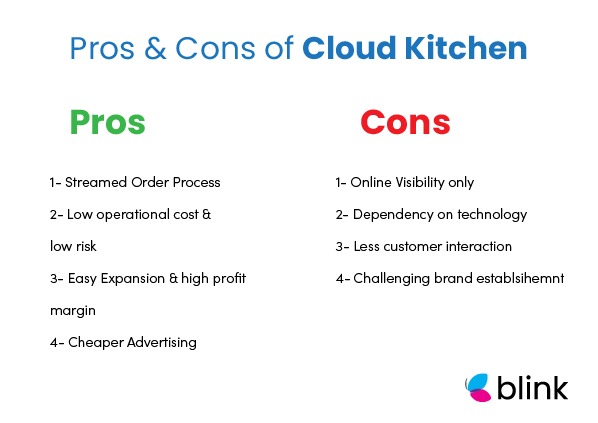
The reason why this business model is super popular right now is because of the PROS.
- No Storefront needed
- Don’t need to own equipment
- Less Paperwork
- No need to talk to regulators
- You don’t need a full staff
Yes – you can skip all those piles of paperwork and focus on your business.
This is a huge benefit for those who are in the food and beverage business.
You don’t have to worry about whether it’s a typhoon or cloudy weather or renting out super expensive restaurant space to set up your food business.
On the contrary, when it’s raining or other similar weather conditions; you’re business will probably spike.
You can skip all the training and customer service. All you have to do is to focus on your craft and to focus on producing quality food.
Another major pro is the substantially lower investment compared to the traditional brick and mortar store because you don’t need your equipment, you don’t need running capital instead all you need is to enter an agreement with one of these cloud kitchens.
It’s that easy.
CONS of Cloud Kitchens
The biggest challenge with operating a restaurant in a cloud kitchen is that you have really limited to no visibility.
The second con associated with the first challenge is that you’re pretty much held to the neck by these food delivery apps.
What that really means is that if they decide to favor a certain restaurant, you’ll be most likely out of business pretty soon. For example, if they decide to charge you a premium you don’t really have any bargaining power with the food delivery apps.
“That’s where white-labeled service providers like Blink come into play. We operate a SaaS-based model which offers restaurants operating in the food business sector white-labeled and branded websites and mobile apps to manage all their ordering, promos, discounts, analytics, and delivery management.
That’s why we personally recommend restaurants operating out of cloud kitchens to leverage this model for 1-2 years until they have an established brand name and then they can set up their own brick and mortar shop. This way you are diversifying and can hedge your stakes accordingly.
One other major con of working with cloud kitchens and delivery apps is that you don’t know your customers. The delivery apps have all the data of YOUR customers!
In the food business, it’s all about loyalty and repeat purchase. You might recall how you might repeatedly have celebrated your birthday or your wedding anniversary at a certain restaurant only. This is mainly because of the vibe you get from these restaurants.
So it’s really essential that you are able to create a linkage with your customers.
3 Types of Cloud Kitchens
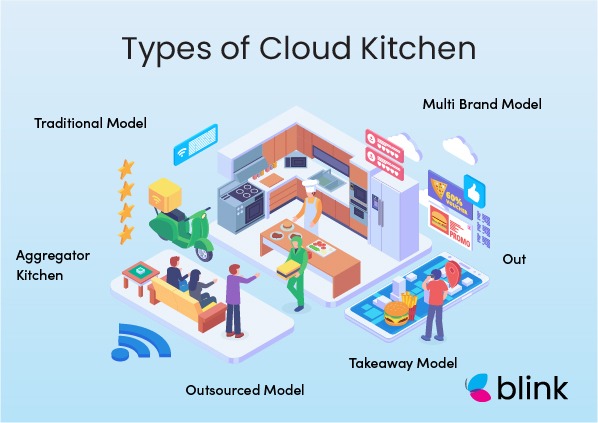
The number one type of cloud kitchens are those that are exclusive to delivery apps for example Uber, Deliveroo. They have their own kitchen and if a restaurant is working in one of these kitchens they can only service through their Apps.
Now the advantage of this model is that you get VIP treatment because they want you to be successful. These delivery apps make most value if you are successful as well.
The advantages might be HUGE based on this model type but a big CON is that you’re missing out a big chunk of the pie because you’re limited to the delivery apps and its channels only.
So for example, if you’re working out of a cloud kitchen owned by Deliveroo then you won’t be able to target clientele from Grubhub, Postmates or Skip the Dishes.
So you’ll have to make an evidence-based decision whether you believe this model will be workable for you or not.
The second model is the nonexclusive model: For example, you might be working in Cloud Kitchen or Kitchen United.
You use their premises and in turn, you can partner with any delivery app service that is out there.
Now you’ll have much more flexibility and reach to a greater number of customers existing on different channels and apps.
The big CON of this model is that you DON’T get the VIP treatment that you would otherwise get from an exclusive model structure.
It’s your choice in the end but I would recommend you could pay a premium for higher placement on the delivery apps or run ads.
The third model we will be talking about is the giant MOBILE CLOUD KITCHENS. They are food trucks but they rent out their facility close to your premises.
This model is not super popular because you’re not servicing a wide range of customers as you’re always operating within a food truck.
The State of Cloud Kitchen(s) In a Post Pandemic World:
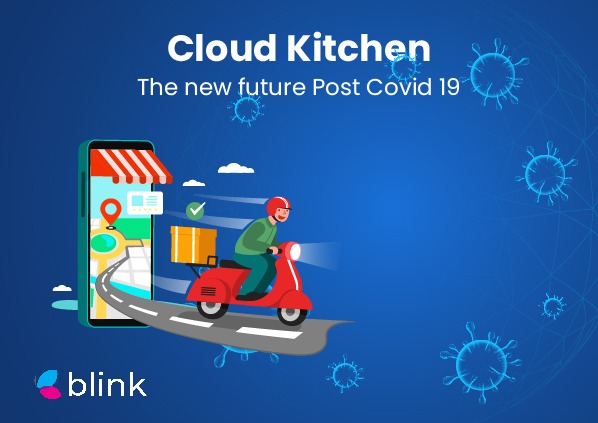
So, nature hit us hard with COVID-19.
It is a gut-wrenching experience for us as humans and as business owners, who were not able to foresee the impact of the ongoing pandemic on different industries. People lost their jobs; remote work took over, foreclosures were called in, mortgage payments got messed up, and almost every kind of business went through a rough patch.
To make matters worse, some of the businesses were shut down. Others got “lucky” and they downsized without second thoughts.
Regardless, COVID-19 reformed the business platform – and an average business owners’ mentality as well.
Restaurants were no exception either.
If we recall clearly, during the outbreak’s initial wave, real-life food businesses had to take a nose dive into something they were not prepared for. Many popular brands and self-starter restaurants had to take a leave of absence, where business operations were shut down for anywhere from a few days to few weeks.
But then again, the food industry was one of the earliest industries to get back to its feet. And alongside that grand homecoming, cloud kitchens were at the forefront. Customers became self-aware of the quarantine situation and ordered even more food than before.
But this trend was always going to catch momentum and it sure did during the pandemic.
Digital ordering has grown three times faster than dine-in traffic since 2014 alone. This is naturally leading to the accelerated growth of cloud kitchens.
This model allows restaurants to cut costs making it an attractive business model especially during a pandemic like COVID-19.
According to a recent report by Euromonitor, cloud kitchens could create a $1 trillion market.
In the USA alone there are approximately 1,500 cloud kitchens – along with other markets like the United Kingdom with 750, China with 7,500, and India with close to 3,500 cloud kitchens.
Third-party platforms like Kitchen United and Kitopi make it easier for restaurants to try out Cloud Kitchens.
Investors are also investing millions of dollars in these cloud kitchens across the US alone. The most popular cloud kitchens include The Halal Haus and Wow Bao are among the top brands that have opened cloud kitchens.
Michael Schaefer (Global Lead, Food and Beverages) from EuroMonitor; “What COVID has done is that it has accelerated the existing trends. There is a view that the restaurant industry is where the retail industry was maybe five years ago”
With ⅔ of food consumption being ordered online in the US alone – the projection is that from $375 billion in 2020 the growth trajectory will take the US Food delivery market all the way up to $467 billion in 2025.
Wait a Minute, Wasn’t Food Ordering Already Available, Long Before ‘Cloud Kitchens’ Took Off?
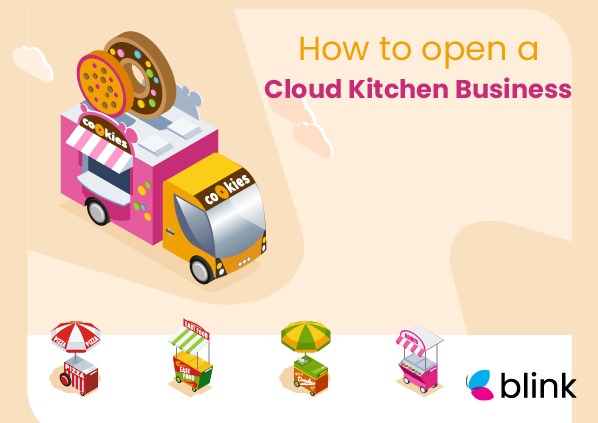
How are cloud kitchens helping in taking the industry forward?
Technically, yes.
People were, and are still, able to order food by making a phone call to their local restaurant. The vendor would have their food ready, and customers could easily pick it up at a preset time.
Likewise, there’s the concept of drive-throughs, which has diminished extensively due to the overall popularity of cloud kitchen(s), and also due to healthcare industries’ restrictions.
Plus, if you are willing to consider the fact that drive-throughs and phone orders, as we were saying earlier, require the customer to drive to the restaurant. That seems like a big “hassle” to people.
Millennials are used to getting things done fast, they have a low attention span, and they love anything that can paint them interested within a short duration. It’s no surprise that a majority of cloud kitchen users are millennials, who have served as a backbone to the business community at a global level.
Top it off with a continued increase in the rising number of working women, nuclear families, and people who love the convenience of ordering food through cloud kitchen apps, you are looking at a revolutionized concept working at full throttle.
What Happened to Your Average Restaurant, Meanwhile?
The “tectonic” shifts led to the birth of specific platforms, such as UberEats, Zomato, Swiggy, and lately white-labeled restaurant ordering systems like Blink have picked up the game allowing individual restaurants to have their own ordering systems. These mediators work hard to further accelerate the growth of the remote food ordering process.
As of now, the time it takes for a person to place an order, and get the food delivered is highly reduced, as compared to the experience of drive-through and on-call orders, where customers have to go to the restaurant location for a pick-up.
While COVID-19 was, and still is, a hard lesson in learning, cloud kitchens did have to go through their fair share of adversity.
As we mentioned earlier in this post, on average, a typical cloud kitchen had to go through a temporary shutdown period of up to 120 days. Meanwhile, this intermittent survival mode called for security measures, social distancing protocols, and whatnot to help aggregators get back on their feet.
Food delivery riders played a pivotal role in keeping the industry afloat while working with the authorities by implementing the right SOP’s. These frontline workers were also given due credit by business owners and governments alike for helping keep the local economy and restaurant industry afloat.
Many restaurants made the transition to becoming part of thriving cloud kitchens and online food ordering portals. Those, who didn’t make the transition, went out of business or had to oversee massive downsizing right away.
In the short term, traditional foodservice providers must work with restaurants towards successful order completion. The customer is the third element in this equation that comes in as a wheel that keeps the unicycle moving!
Furthermore, food deliveries, at one point, were a pivot towards survival. Fortunately, that time is beyond us and the cloud kitchen industry is looking forward to tons of brand-new possibilities.
Why is Cloud Kitchen a Popular Food Business Idea for Startups?
We can think of several reasons for that. But, let’s just stick to the obvious ones to showcase the robustness of the cloud kitchen concept for startups.
Right off the platter, there is a minimal overhead cost where you do not have to pay annuals for maintaining a brick-and-mortar restaurant. Since it’s a dine-out experience for customers, you can sign up for an account with an online delivery partner or opt for your own app.
This partner will provide you with a backend interface that’s white-labeled to your name-brand restaurant’s requirements. Furthermore, each dedicated space hosts ready-to-use templates where new signup accounts can create their menu and append respective details on the get-go.
Moving on, the actual process of how this thing works is super simple:
- All the orders come from customers at remote locations
- The restaurant gets the order through an app and uses its cloud kitchen premises to cook the food.
- Food preparation is underway and the customer is notified of it through the restaurants own app or its listing on an aggregator like DeliveryHero, Zomato or UberEats
- The cooked meal is packed and ready to be delivered
- A designated rider picks up the food and delivers it to the concerned customer
Throughout the process, there are no waiters, no VIP table reservations, and certainly no traffic jams. Everything was done mostly on auto mode where the food brand and customer go through a systematic process towards a successful order completion.
It couldn’t get simpler than that.
Did You Know?
To keep profits to an all-time high, you can sign up for a vendor account at Blinkco.io. We charge an all-time low commission, ranging between 2% to 2.5% to restaurants. We believe in empowering name-brand restaurants that are especially working on a limited budget.
Instead, we charge a nominal subscription-based fee, that helps to keep both parties satisfied and enables your business to operate without any hitches.
3 Most Influential Reasons to Be a Part of Popular Cloud Kitchen Right Now
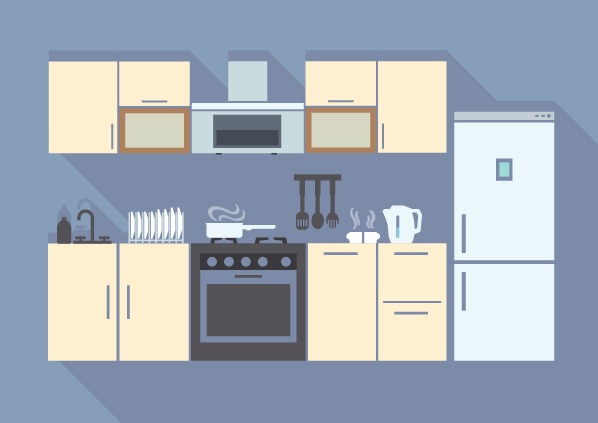
- Low-stakes easy entry followed up with the healthy competition.
- Everything is handled by the aggregator, such as Blink – unless you have heavily invested in your own application (*not recommended).
- 24/7 protected customer information. You will not know your customers because their data is handled by the aggregator.
Outreach-wise, a normal cloud kitchen has the potential to simultaneously target multiple demographics and target audiences at the same time. The scalability of the business depends on how fast the food brand can move things to meet the customer-centric demands.
Additionally, you can optimize your best offers, new menu entrees, and other specialties to see what works best for you and your customers. Some of your customers are only active during lunchtime hours; why not offer them a time-gated menu through the food aggregator application that you partnered with?
A few steps further, it is like working in a big kitchen with minimum investment and a low-risk quota. That’s why startups are overly ecstatic to get on with the concept of cloud kitchens.
Euromonitor, a leader in strategic market research, recently made a massive prediction concerning cloud kitchens scalability by the year 2030. The company estimated that cloud kitchens from all over the world will have a worth of 1 Trillion dollars.
The global increase in demand for online ordering channels during the COVID-19 pandemic compelled businesses to shift to online ordering modes, while cloud kitchens also scaled exponentially.
As of now, cloud kitchens are ahead of the traditional restaurant delivery business model. Since these kitchens allow multiple name-brand restaurants to operate under one roof, or one name-brand restaurant to operate at multiple levels, the overall cost of doing business is cut down.
As a result, cloud kitchen operators can focus on marketing and scaling their business, instead of worrying about keeping up with infrastructure sustainability expenses. Euromonitor’s M. Schaefer believes that a bright future lies ahead of cloud kitchens over the next 10 years or so.
Similar to Euromonitor, Richard Ellis of Coldwell Banker also stated that cloud kitchens had a growth spurt of 85% through 2019 and 2020. The company believes that, by the end of the year 2021, cloud kitchens will easily surpass the $600 million mark.
However, as much as the industry is hopeful about the new business prospects that cloud kitchens are bringing in right now, many of them also went bankrupt. In the United States, bankruptcy grew because the process of scaling cloud kitchens’ incurs capital costs. Since the demand for [X] isn’t too high right now, scalability goals have to be re-aligned with current business requirements.
Industry experts believe that, by promoting cloud kitchens, they can increase their awareness among restaurant and food business owners.
Renewed Technology Innovations In Cloud Kitchens Concept
If we talk about the latest technological innovations, it is imperative to mention the use of robots. ‘Flippy’, the robot, was created by Miso Robotics (Netherlands) with limited functionalities. This new invention can control the fryer and the grill to help fast-food chains process their orders at an accelerated rate.
However, Flippy is still undergoing improvements. It is not programmed to handle multiple operations, which is why it hasn’t been introduced to the Cloud Kitchen industry on a large scale. Once such technologies are refined enough, the food & beverage market will find it much easier and way more efficient to process online and offline orders simultaneously.
FAQS
1. How does a cloud kitchen work?
A cloud kitchen, as we mentioned earlier in this post, is a shared space where multiple restaurants work independently.
The idea is to minimize costs that would otherwise make it difficult, especially for a startup-level restaurant to operate independently. Cloud kitchen partners usually sign up for a partner that enables them to have their own white-labeled online space. As a result, these restaurants have the full freedom to create and deploy their own menus at the restaurant aggregator’s backend, while customers see interactive food items to choose from, on the front end.
The concept isn’t that hard to understand from a restaurant’s point of view. Any food business entity that doesn’t have the resources to have its own native food ordering app, can partner with companies to avail such services at a monthly or commissioned based cost.
Blink Co is one such example of a mediator where multiple restaurants are operating online without having to spend extra revenue on independent apps and vice versa. 2. Who Uses Cloud Kitchens?
Cloud kitchens are used by any number of restaurants to expand their business for a nominal cost.
Turning to cloud kitchens is an ideal solution for many startups since they are on a tight leash when it comes to management, budgeting, employee performance monitoring, and other competitive standards to keep up with.
Many players operating through cloud kitchens use Blink Co, UberEats, and DoorDash to optimize their food delivery experience for customers. These customers place orders through online food ordering apps and services through a dedicated white-labeled platform that works independently for each restaurant.
Blink allows you to have your own branded food app – it is like having your own virtual space where you can create and deploy your menu, handle incoming orders through the cloud kitchen app, and do tons of other activities without breaking the bank.
3. Benefits of a Cloud Kitchen
Although cloud kitchens’ benefits are unlimited, many restaurants sign up for a shared experience for the following pros:
- Added convenience
- Optimized food delivery experience
- Able to meet customers demand on a short time scale
- Lower overhead cost and other expenses that would otherwise make it difficult to carry business operations
4. Cloud Kitchens vs. Traditional Kitchens – What’s the basic difference?
Traditional restaurants are real-life brick-and-mortar business entities that not only have increased overhead, lower cost savings, and other business requirements to meet.
These restaurants require a dining area for walk-in customers and waiters to cater to such requirements. Additional space also means additional expenses and increased maintenance charges that often pile up, and make it difficult for a traditional kitchen to reach a breakeven point.
Meanwhile, could kitchens are based on traditional kitchens where many restaurants share a single dedicated space to handle business activities. This space is used to host chefs, necessary staff, and other individuals that are actively able to handle incoming orders through a partner app.
As a result, the majority of the focus for a name-brand restaurant is shifted to alleviating customer experience, rather than the aforementioned constraints.
5. Starting a Cloud Kitchen in UAE?
Food delivery statistics in UAE suggest there will be an increase of 6% per annum in 2022 and likely to grow consistently over the next five years. The basic components of any good cloud kitchen model operating in the UAE will need to comprise of the following:
a. Location
Cloud kitchens don’t necessarily have to be based in a top-notch premium locality. You can operate a cloud kitchen business from a space ranging from as low as 200-350 sq ft, which enables cost efficiencies.
b. License
The major licenses required to start a cloud kitchen business in Dubai and Abu Dhabi are Trade licenses and Food Licenses.
c. Kitchen Packaging and Equipment
Here is a quick list of restaurant kitchen packaging and equipment you will need.
d. Staff
Things that you need to consider while selecting staff for your cloud kitchen in 2021 & beyond: Begin with assessing personality traits, look at their experience, gauge the ability to be creative, and YES! don’t forget to try their best recipe in cooked form. 😀
e. Technology needed for a cloud kitchen
There are tech-related requirements that are a prerequisite for you to successfully set up your cloud kitchen business: centralized ordering system, online ordering via branded apps (like Blink), call center staff to receive telephonic orders, and finally integrated kitchen display systems.
At the End of the Day…
Cloud kitchen is indeed a future-proof concept that is here to stay for the long haul. Many multiple successful restaurants are already operating successfully through cloud kitchens.
The question is: if you are a startup, have you found your own virtual restaurant yet? If not, then what’s holding you back?
We would love to hear from you through the comments section below. Alternatively, you could write to us with valuable insight on the do’s and don’ts of the restaurant industry these days.
